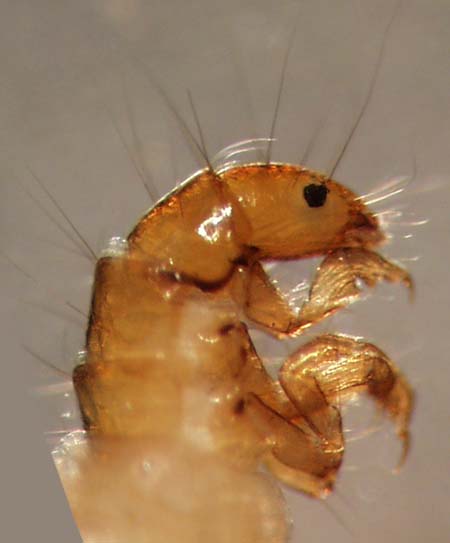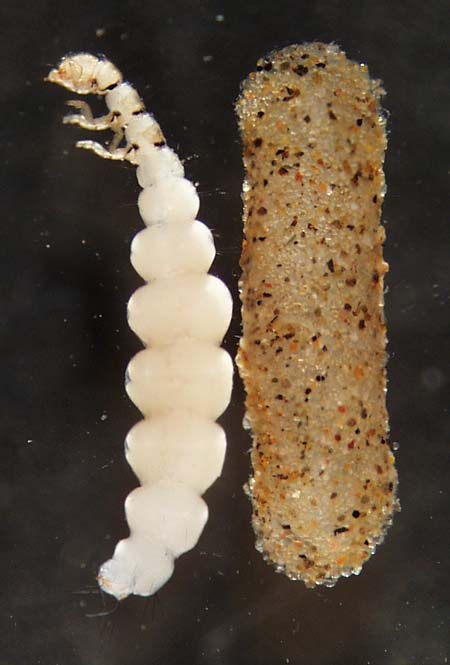
THE XERCES SOCIETY FOR INVERTEBRATE CONSERVATION Aquatic Invertebrates in Pacific Northwest Freshwater Wetlands |
| Identify taxa |
Hydroptilidae (micro caddisflies or purse case makers) |
Hydroptilids inhabit all aquatic habitats and may be called micro caddisflies as they are among the smallest of the caddisflies (larvae range from 2 to 6 mm). They are also called purse case makers, as several genera make flat oval cases of silk with bits of fine rock or plate material. The diversity of purse case maker genera in the West tends to decrease the farther north you go. Several taxa are found in the Southwest, many extend as far north as Oregon, and a few others are found throughout the West. Two genera were collected in a study in the Willamette Valley of Oregon: Hydroptila and Oxyethira. As with other caddisflies, the larval hydroptilids go through 5 larval instars. The first four instars generally develop rapidly (sometimes in a few weeks), and only the last instar builds a case. As the 5th instar grows and the abdomen becomes enlarged, the larvae of most genera split the seam of the ventral side of the case, add material to the edges, then suture the new edges together with silk. The biology of purse case makers is otherwise poorly known. The Hydroptillidae are easily distinguished from other Trichoptera: they have a flattened abdomen (may be from side to side or top to bottom) that may be swollen in the middle in late instars; short or tiny anal prolegs; lack easily noticeable gills; and have hardened plates on top of all three thoracic segments. The early instars can be hard to identify because they are more heavily sclerotized and may look similar to beetle larvae. |
Size: small to medium |
|
© 2007 Xerces Society
Contact info@xerces.org




